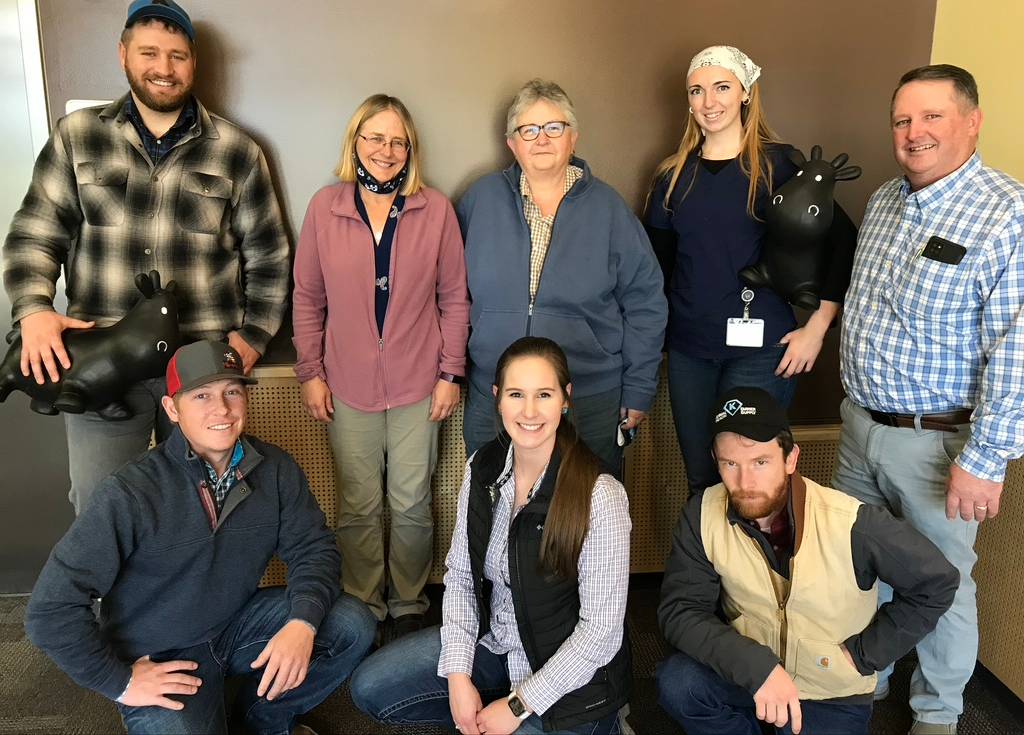Diagnostic Challenges: Putting Vet Med Students to the Test
The gap between a student learning about veterinary medicine and an actual veterinarian who diagnoses and treats animals can be daunting. Lectures, textbooks, and even demonstrations are one thing, but using the knowledge from those sources to save an animal’s life is another.
One of the most important ways that students at Utah State University’s School of Veterinary Medicine bridge the gap is through diagnostic challenges. Held in the second year of the program, the first challenge is organized at USU’s Logan campus, while the second is at Washington State University’s Pullman campus. Students receive the details of a real clinical case that they must solve on their own in small groups. While the clients and patients are volunteer actors and stuffed animals, no help is offered to students in solving the case.
Dr. Allison Willoughby directs the challenges and emphasizes their importance for the students.
“This is the students’ first time in charge of a clinical case from start to finish,” said Willoughby. “The challenges provide an opportunity to use the clinical reasoning skills students have been practicing to systematically work through the problems an animal or herd presents with.”
One student, Ty Carpenter, appreciated the gravity of the situation.
“I wondered prior to DC week if I was really qualified to diagnose a disease,” Carpenter. said. “Yes, the whole situation is roleplayed, but even so, it’s quite intimidating to be only an early second-year veterinary student and get asked to definitively diagnose a disease.”

However, clinical knowledge isn’t all students need when interacting with patients. Melisa Bishop, the School of Veterinary Science program coordinator, works behind the scenes to make the challenges come together. She noted that these additional considerations are just as vital to success in the challenges.
“The students need to establish a rapport so that the client will tell them a story leading up to what happened to their animal,” Bishop said. “Students also need to do an exam, fill out paperwork, order diagnostic tests, interpret the results from those tests, and then relay those results back to the client in a way that they can understand.”
They key is putting everything together.
“These are all things they’ve learned before,” said Bishop, “but haven't actually gone through as a process yet.”
In Carpenter’s case, that meant trying to build trust with a client who was reluctant to pay for an expensive antibiotic to treat their herd of cattle.
“Anyone who has experience working in agriculture knows that the bottom line is always a factor to keep in mind,” said Carpenter.
Even so, that hesitation proved costly.
“It was frustrating to know that there were certain diagnostic tests and treatments we could have implemented earlier to prevent the progression of the disease,” Carpenter said. “Our group had to work with what the client was willing to let us do, and it wasn’t until we had a death due to serious disease that the client allowed us to treat the herd appropriately.”
In the end, the experience proved valuable to Carpenter.
“I learned that it’s okay as a veterinarian to not know the answer to everything,” said Carpenter. “In the end, what the client truly cares about is that you work hard with the resources you have in order to save their animals. Although veterinarians are in the animal business, it’s equally a people business, so working with and communicating effectively with the client is a must.”
Carpenter also appreciated the process of working with classmates on the case.
“As a veterinarian, it’s important to rely upon your colleagues to fill in the knowledge gaps you may have. Working in a team is very beneficial in veterinary medicine, and I enjoyed the time that I got to spend with my classmates.”

